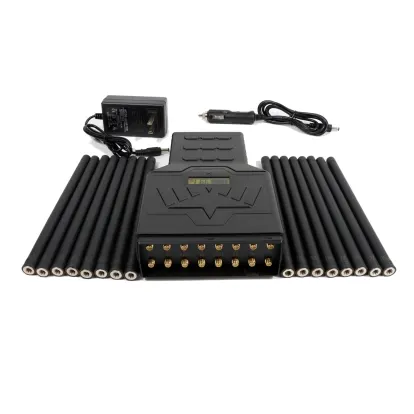A WiFi and bluetooth jammer Can Prevent Data Theft
It is important to understand that WiFi is available in 2 frequencies, 2.4GHz and 5GHz. While 2.4GHz is by far the most commonly used, some newer routers do include 5GHz.
Bluetooth is within the 2.4GHz band, so any WiFi jammer that covers 2.4GHz is also going to block Bluetooth.

The next important consideration is the size of the coverage area needed for your application. We offer units such as which covers both 2.4GHz and 5GHz to approximately 15 meters, the popular spy camera jammer which covers 2.4GHz WiFi only to approximately 20 meters, or the extremely powerful which covers both, up to 250 meters.
There are some variations in the coverage area depending upon local signal strength, physical environment, etc. Where the signal is weaker, the coverage is greater, and vice versa.
How Far Should WiFi Reach?
The range of the WiFi signal can be influenced by factors such as the frequency range, signal strength, and the presence of walls or obstacles that may obstruct the signal between your jamming device and the router.
In terms of device coverage, the 2.4 GHz frequency band provides superior results, albeit at a slower speed. Comparatively, the 5 GHz frequency band offers higher speeds but has a more limited range, which can enhance your network's performance.
A standard WiFi router generally provides coverage within a range of about 100 feet indoors and up to 300 feet outdoors in open areas. Nevertheless, the range can be significantly affected by interference caused by other devices or materials.
Signal Disturbances and Interference
Through the utilization of a frequency range (2.4GHz or 5GHz) that travels through the air, the WiFi signal establishes a seamless connection between your devices and the internet. It is essential to consider newer equipment that supports the 5 GHz frequency band as signals in this band have a shorter range, minimizing the possibility of interference from neighboring networks in contrast to older equipment operating on the 2.4 GHz band.
Metal
Metal is the primary culprit when it comes to weakening your WiFi signal. Its excellent electrical conductivity allows it to reflect WiFi signals, resulting in buffering during streaming or videoconferencing, lagging during gaming, and frustratingly slow loading times.
Walls (Concrete & Brick)
Various factors, including the type of wall material and its thickness, play a role in determining the extent to which WiFi signals can be blocked by walls.
The ability of WiFi signals to penetrate walls can be impeded by concrete and brick materials. In particular, concrete walls pose a greater challenge as their higher density and thicker mass make them more effective at blocking WiFi signals compared to brick walls.
Windows, Glass & Mirrors
It’s generally not recommended to place your router next to a window or a mirror, either. WiFi signals can’t pass through windows, glass, and mirrors because these materials contain a thin layer of metal that reflects the radio waves back instead of allowing them to pass through.